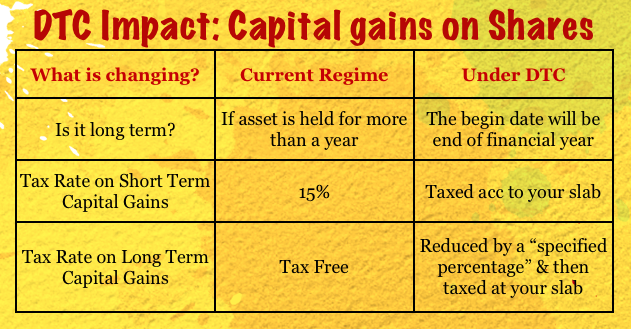This is another post from the Suggest a Topic page, and we’re going to look at Wealth Tax as proposed in the Direct Tax Code today.
The source of this information is primarily Part E, Chapter X, Wealth Tax from the Direct Tax Code, and the Revised Discussion Paper on the Direct Tax Code, so if you know of a later document on DTC, then please let me know and I’ll revise the post according to information in that document.
Under DTC, Wealth Tax will be charged on individuals, HUFs and private discretionary trusts. Non profits will be exempt from this tax.
Currently, Wealth Tax is charged only on “unproductive assets” but with the Direct Tax Code – Wealth Tax will be charged on all assets with just a few exceptions.
The DTC document describes these applicable assets in detail; for instance a watch valued at more than Rs. 50,000 will be included in your wealth, and cash exceeding Rs. 2 lakhs will also be included in your wealth.
However, there are some exceptions in what will be included as part of your assets. So, if you were a king before independence then your house or your jewelery will not be taxed at all. Or, if you weren’t a king but still had a house or plot which didn’t exceed 500 square metres – that will be excluded from Wealth Tax calculations.
Or, if you had a house that you let out for more than 300 days in a year, then that house will not be included as part of your Wealth.
This is a fairly involved and long list, and if you had to pay Wealth Tax then you definitely need professional advice to figure out what to include, and at what value.
The good news however is that as it stands right now, the threshold for attracting Wealth Tax is pretty high at Rs. 50 crores. Based on that, only a few people will be liable to pay this tax. The rate is set at 0.25% of your net wealth.
Net Wealth is arrived at by subtracting wealth related loans from your assets.
As you know, there is a lot in the DTC that is still to be finalized, and the discussion paper does touch upon the fact that the current limit is too high, and also that productive assets should be exempt from taxes (like they were earlier), so it’s fair to assume that they will bring down the limit of Rs. 50 crores, and they will let shares remain outside the purview of this tax.
I think shares will be kept out of the purview of Wealth Tax because most promoter families have shares worth thousands of crores in their companies, and in some cases they may even have to sell some stock to pay this tax. Some of you might draw parallels with proposed ESOPs (Employee Stock Options) taxation from about a decade ago.
We will have to wait and watch to see how Wealth Tax is finalized in the Direct Tax Code, but given the high threshold limit, most of us probably don’t have much to get worried about.


